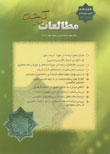An Investigation of Negation in Persian Translations of the Holy Qur’an
Abstract
This study has investigated negation in Persian translations of the Holy Qur’an. A typological study of negation in different languages illustrates that negative elements can generally be classified into two categories: standard negation used in negating basic sentences, and other negative elements like negative adverbs and negated adverbs. Languages use some or all types of negation devices. The study of negation in translations reveals the changes and developments in negation in Modern Persian. It also shows that in some translations negation has been presented as a free morpheme appearing in differing positions, from the right most part of a sentence to almost the left most part attaching as a prefix to the verb. This research also indicates that the base, to which the negative marker is attached, affects the selection of appropriate morphological form. The findings of this study suggest that translations of the Holy Qur’an can be useful sources for translation studies in general and Persian translation studies in particular.Published
2011-05-31
How to Cite
Mansouri, M. (2011). An Investigation of Negation in Persian Translations of the Holy Qur’an. Iranian Journal of Translation Studies, 9(33). Retrieved from https://journal.translationstudies.ir/ts/article/view/464
Issue
Section
Academic Research Paper
License
Copyright Licensee: Iranian Journal of Translation Studies. This article is an open access article distributed under the terms and conditions of the Creative Commons Attribution–NonCommercial 4.0 International (CC BY-NC 4.0 license).





